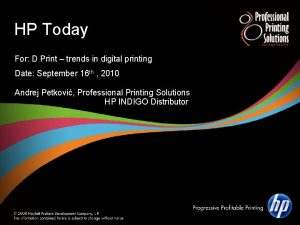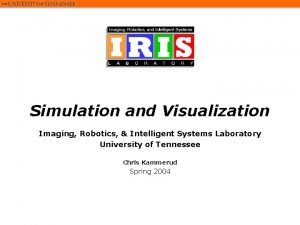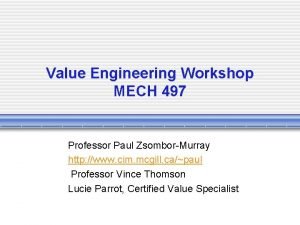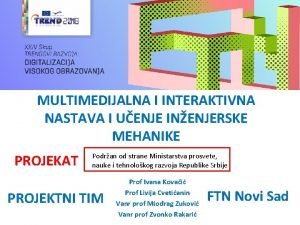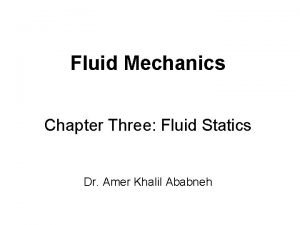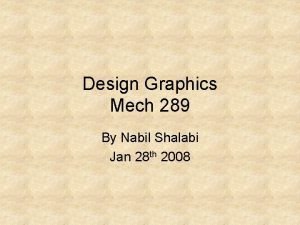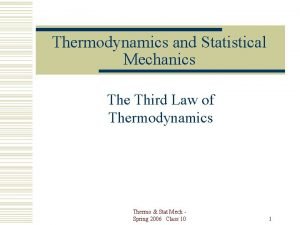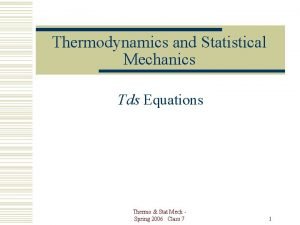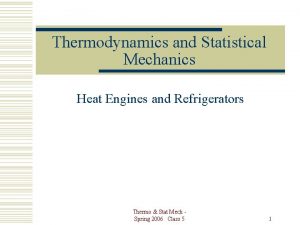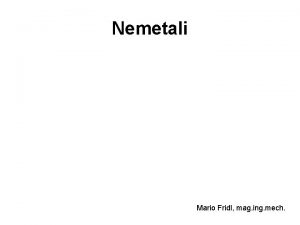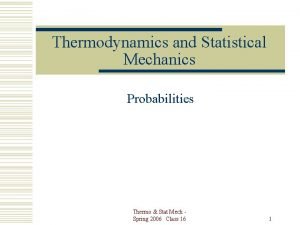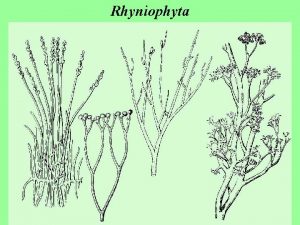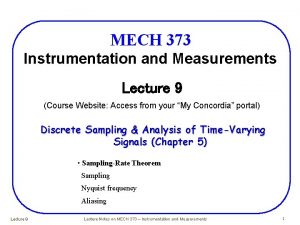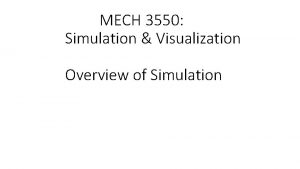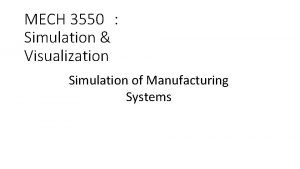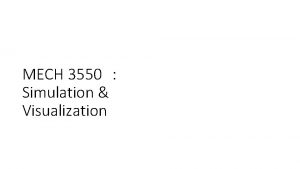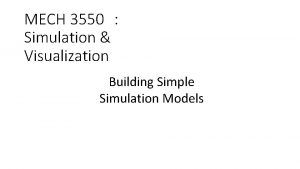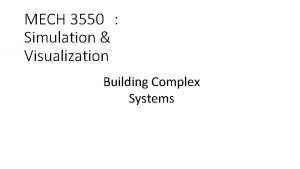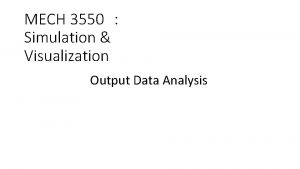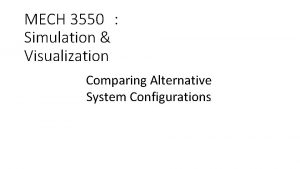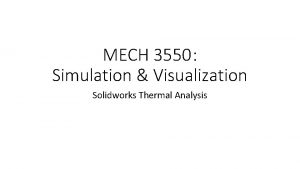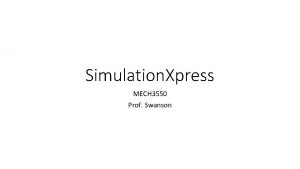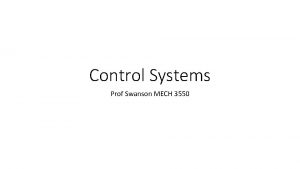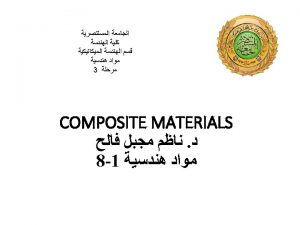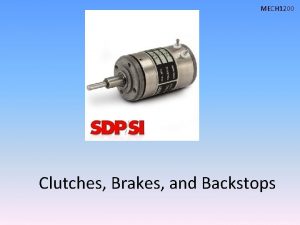MECH 3550 Simulation Visualization Overview of Simulation Software














- Slides: 14

MECH 3550: Simulation & Visualization Overview of Simulation

Software Covered in Todays Class • C Basic • Matlab • Solidworks

Why to Learn C Programming? • C programming language is a MUST for students and working professionals to become a great Software Engineer specially when they are working in Software Development Domain. I will list down some of the key advantages of learning C Programming: • Easy to learn • Structured language • It produces efficient programs • It can handle low-level activities • It can be compiled on a variety of computer platforms

Facts about C • C was invented to write an operating system called UNIX. • C is a successor of B language which was introduced around the early 1970 s. • The language was formalized in 1988 by the American National Standard Institute (ANSI). • The UNIX OS was totally written in C. • Today C is the most widely used and popular System Programming Language. • Most of the state-of-the-art software have been implemented using C. • Today's most popular Linux OS and RDBMS My. SQL have been written in C.

Hello World Program

Basic Simulation Modeling • The Nature of Simulation • The act of using computers to simulate the operations of various real-world processes • Analytical Solution

Systems, Models, and Simulation • A system is defined as a collection of entities that act and interact together to accomplish a logical goal. • There are two types of systems: • Discrete: Variables change instantaneously at separated points in time. • Continuous: Variables change continuously with respect to time. • Examples • Discrete-Bank • Continuous-? ? ?


Static vs Dynamic Simulation Static Simulation: Not dependent on time. Dynamic Time Dependent Simulation

Deterministic vs Stochastic Deterministic • Contains no random components Stochastic • Contains random aspects of input and output as well

Continuous vs Discrete Continuous • Modeling of a system where state variable change continuously over time. Discrete • Modeling of a system at individual points in time.

Discrete Event Simulation • Discrete • Dynamic • Stochastic • We will mainly be discussing these

Flow Chart for Arrival Routine, Queueing Model Arrival Event Schedule the next arrival event Add 1 to the Queue Write error message and stop simulation Yes Is the server busy? Is the queue full? Set delay=0 for this customer and gather statistics Add 1 to the number of customers delayed No Store time of arrival of this customer No Make the server busy. Return Schedule a departure event for this customer

Flow Chart for Departure routine, queuing model Departure Event Make the server idle Yes Is the queue empty? No Subtract 1 from he number in queue Compute delay of customer entering service and gather statistics Add 1 to the number of customers delayed Schedule a departure event for this customer Eliminate departure events from consideration Return Move each customer in queue (if any) up one place.
